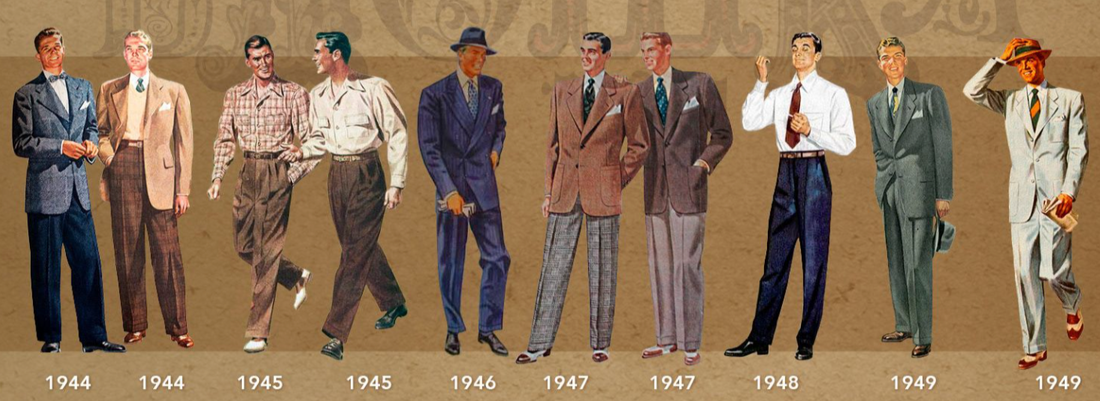
The Evolution of Men’s Fashion: A Historical Perspective
Share
Men’s fashion has undergone significant transformations over the centuries, evolving from practical garments designed for protection and modesty to today’s sophisticated styles that blend comfort, function, and aesthetic appeal. As a brand dedicated to high-quality men’s clothing, AttireMen™ appreciates the rich history that has shaped the way men dress today. Join us as we explore the evolution of men’s fashion, highlighting the key milestones that have defined how men present themselves throughout history.
Ancient Roots: Function Over Form
In ancient civilizations, men’s clothing primarily served functional purposes, offering protection from the elements and signifying social status. The Egyptians, for instance, wore simple linen garments such as tunics and kilts, which were both practical for the hot climate and a symbol of rank. Similarly, in ancient Greece and Rome, the toga and tunic were common garments, with the style and quality of fabric often reflecting the wearer’s social standing.
The Middle Ages: The Emergence of Layers
The Middle Ages marked a period where layers became a defining feature of men’s fashion. Tunics, often worn over hose or leggings, became longer and more elaborate, reflecting the growing complexity of social structures. The surcoat, a sleeveless outer garment, was also popular during this time, often worn over armor in battle or as a sign of nobility. Men’s clothing in this era began to emphasize status, with rich fabrics and intricate designs symbolizing wealth and power.
The Renaissance: The Flourishing of Fashion
The Renaissance era was a golden age for men’s fashion, as art and culture heavily influenced clothing styles. This period saw the introduction of more fitted garments, such as doublets and hose, which highlighted the male form. Luxurious fabrics like silk, velvet, and brocade became widespread among the upper classes, often adorned with elaborate embroidery and jewels. The Renaissance also brought about the concept of seasonal fashion, with different fabrics and styles being worn according to the time of year.
The 18th Century: The Rise of Elegance
In the 18th century, men’s fashion became even more refined, with an emphasis on elegance and sophistication. The introduction of the three-piece suit—comprising a coat, waistcoat, and breeches—became a staple in men’s wardrobes. The suit’s design evolved throughout the century, becoming more streamlined and fitted. The Enlightenment period also brought about a focus on grooming and personal appearance, with powdered wigs, lace cravats, and polished shoes completing the ensemble.
The 19th Century: The Dawn of Modern Menswear
The 19th century was a transformative time for men’s fashion, laying the foundation for many of the styles we see today. The Industrial Revolution brought about mass production, making clothing more accessible to the general public. Tailoring became more precise, and the modern suit began to take shape, with a focus on clean lines and minimal ornamentation. The Victorian era, in particular, emphasized modesty and formality, with dark colors and structured silhouettes dominating men’s fashion.
The 20th Century: Fashion Meets Function
The 20th century ushered in a new era of men’s fashion, characterized by the blending of style and functionality. The early decades saw the continued refinement of the suit, with designers like Coco Chanel and Yves Saint Laurent revolutionizing men’s tailoring. The mid-century introduced casual wear, with jeans, t-shirts, and leather jackets becoming symbols of rebellion and youth culture. The latter part of the century saw the rise of athleisure, as comfort and versatility became key components of men’s wardrobes.
Today: A Blend of Tradition and Innovation
In the 21st century, men’s fashion is a dynamic blend of tradition and innovation. While classic styles like the tailored suit and dress shirt remain timeless, there’s also a growing emphasis on sustainability and ethical fashion. Brands like AttireMen™ are leading the charge by offering high-quality garments made from organic materials, combining the best of both worlds—style and responsibility. Today’s men can enjoy a diverse wardrobe that caters to every aspect of life, from professional settings to casual outings, all while being conscious of the impact their clothing has on the environment.
Final Thoughts
Men’s fashion has evolved from simple, functional garments to sophisticated, multi-purpose attire that reflects individual style and values. At AttireMen™, we honor this rich history by offering clothing that embodies the principles of quality, comfort, and sustainability. Whether you’re dressing for success or relaxation, our collection is designed to meet the demands of modern life while staying true to the timeless traditions of men’s fashion.
